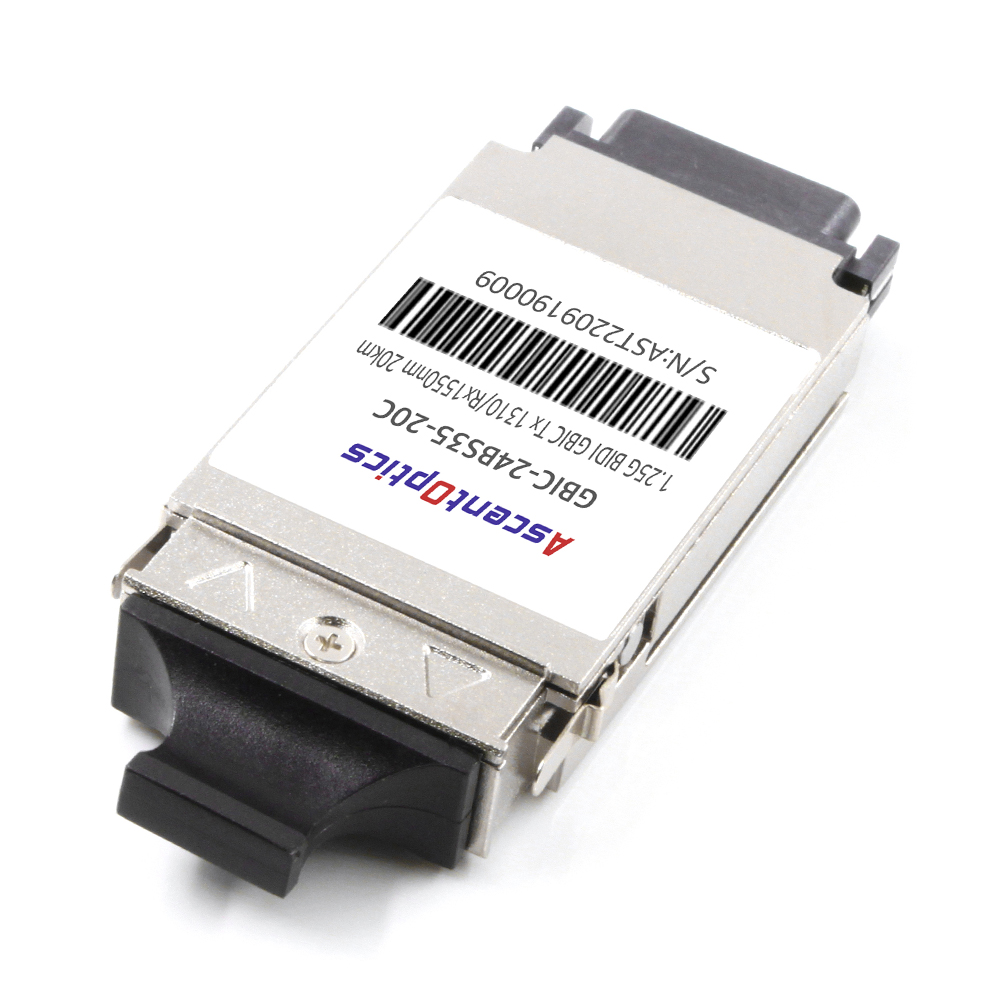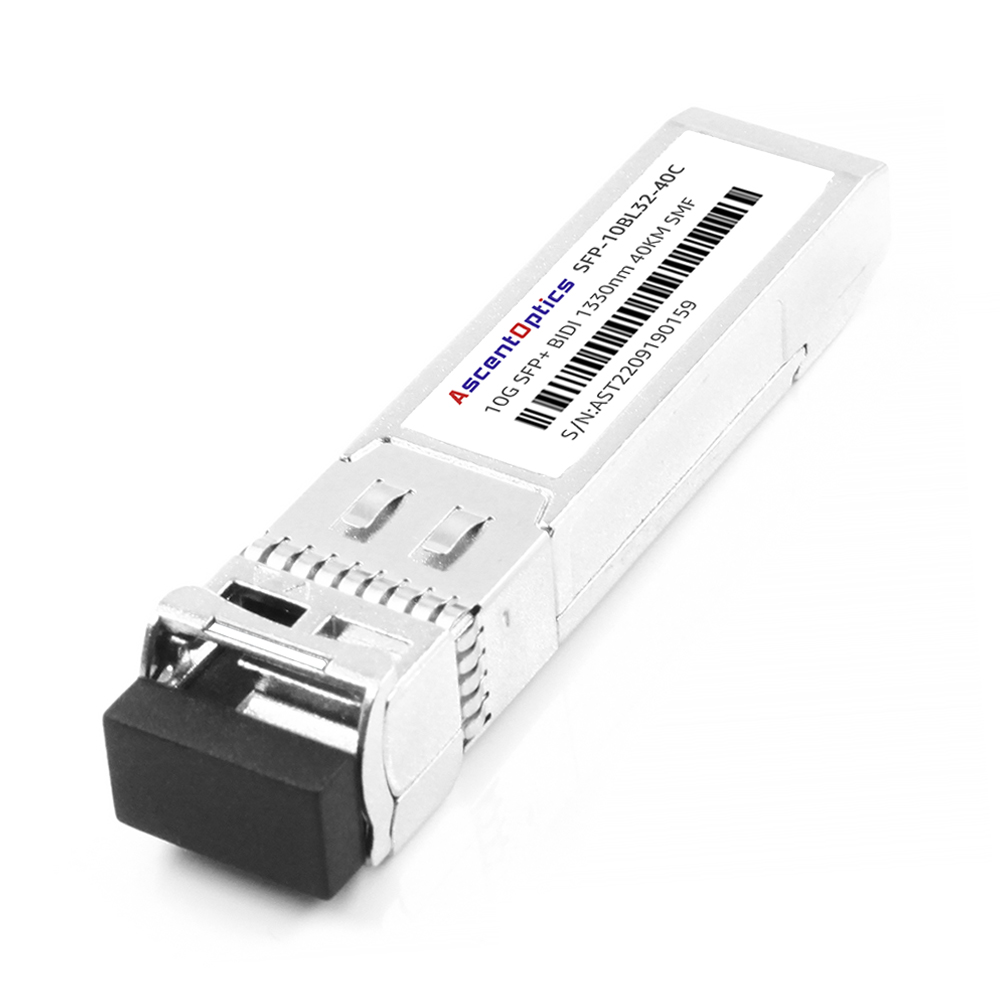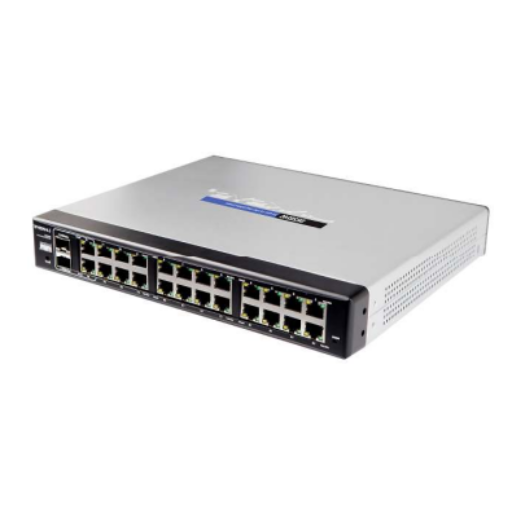You may have heard of GBICs and SFP modules if you work in IT or telecommunications. These two small components are crucial in modern network systems. They both enable data to travel through networks but do it in slightly different ways. In this article, we’ll look at GBIC and SFP modules, explore their differences and similarities, and examine their applications, advantages, and disadvantages.
A Gigabit Interface Converter (GBIC) is a transceiver that converts digital signals into optical signals. It’s a small module that can be inserted into a switch, router, or network device. GBICs connect devices, such as switches or routers, to a network. GBICs support Gigabit Ethernet and other networking protocols such as Fibre Channel.

A Small Form-factor Pluggable (SFP) module is a transceiver that connects network devices to optical fiber networks. Like GBICs, SFPs convert digital signals to optical signals. SFP modules are more minor than GBICs and are often called mini-GBICs. SFP modules support Gigabit Ethernet and other network protocols such as Fibre Channel.
Recommended Reading: SFP+ Module: Everything You Need to Know
The main difference between GBIC and SFP modules is their size. GBIC is larger than the SFP module. GBICs are commonly used for gigabit Ethernet and are usually interchangeable. The equipment containing GBIC slots can generally accommodate various GBIC types from different manufacturers. GBIC and SFP modules can be used interchangeably across other vendor platforms (depending on vendor compatibility).
On the other hand, SFPs are smaller and more flexible than GBICs, making them ideal for use in dense installations. They can be directly integrated into a switch or router, or a slot can be designed for the module. SFP slots can be used to insert copper or fiber connections.
GBIC and SFP modules have various network applications. They are commonly used to connect switches, routers, and servers to fibre optic cables. GBIC can support a range of network connections, including the traditional copper cable and T1/E1 networks. They can also support 1000BASE-ZX, 1000BASE-LX, and 1000BASE-SX optical fiber protocols.
On the other hand, SFP is commonly used for longer data transmissions but is also supported by many manufacturers and equipment models, allowing for replacement or upgrades as needed. SFP modules are widely used nowadays in various applications, such as telecommunications systems, computer networks, wireless networks, industrial Ethernet, and host-bus adapters.
GBIC and SFP modules have advantages and disadvantages depending on your network requirements.
It can support a variety of interfaces with different fibre-optic protocols.
Have a rugged and heat-resilient design.
Offers flexibility in scaling or upgrading a network system.
GBIC is backward compatible with previous fibre optic protocols.
Large physical size.
High power consumption.
GBIC is relatively expensive.
Small size, lightweight, and easy to install.
They consume less power.
Low cost, making them cost-effective.
SFP can be used with other applications (including wireless and voice over internet protocol (VoIP)).
They are less rugged and heat-resistant.
It only supports a limited range of connections.
Limited distances of transmission range.

Recommended Reading: Everything You Need to Know about SFP Ports
GBIC (GigaBit Interface Converter) is a transceiver module that converts electrical signals into optical signals. It is an essential network component that enables connections between network devices.
GBIC technology combines electronics and optics to convert electrical signals into optical signals that can be transmitted over fiber optic cabling. It is a hot-pluggable module that can be easily inserted and removed from switches and routers. GBICs are available in various types with different transmission rates, wavelengths, and distances. The most common types of GBICs are Gigabit Ethernet GBICs, which support data transfer rates of 1 Gbps.
A standard GBIC module comprises several components: a transmitter, receiver, laser driver, post-amplifier, and diagnostic monitoring interface. The transmitter uses a laser or LED to convert electrical signals into optical signals, while the receiver converts optical signals back into electrical signals. The laser driver controls the transmitter’s output power, and the post-amplifier amplifies the weak optical signal received by the receiver. The diagnostic monitoring interface provides a feedback mechanism that enables real-time monitoring of module parameters such as temperature, voltage and transmit/receive power levels.
The transmission process in a GBIC module involves converting electrical signals into optical signals and sending them over fiber optic cables. The process starts with the transmitter converting the electrical signal into an optical signal using a laser diode or LED. The optical signal is transmitted over the fiber optic cable to the receiver at the other end. The receiver converts the optical signal back into an electrical signal and passes it on to the network device. The GBIC module also monitors temperature, voltage, transmit/receive power levels, and laser bias current.
Compatibility issues may arise when using GBIC modules with different network devices. Other network devices may have additional compatibility requirements for GBIC modules. Before purchasing a GBIC module, it is vital to check the device compatibility list to ensure that the GBIC module is compatible with the network device. Incompatibility issues can result in poor performance or complete failure of the network device.
To replace a GBIC module, first, turn off the power to the network device and remove the old GBIC module. Carefully insert the new GBIC module into the empty slot, ensuring it is fully seated. Turn the power back on to the network device and test the new GBIC module. Following the manufacturer’s instructions when replacing a GBIC module is essential. Best practices include ensuring that the new GBIC is compatible with the network device, handling the GBIC module with care, and avoiding static electricity during installation.
GBIC technology plays a vital role in connecting network devices. It is a hot-pluggable module that converts electrical signals into optical signals and vice versa. GBIC modules consist of several components: a transmitter, receiver, laser driver, post-amplifier, and diagnostic monitoring interface. The transmission process in a GBIC module involves converting electrical signals into optical signals and sending them over fiber optic cables. Compatibility issues may arise when using GBIC modules with different network devices. Replacing a GBIC module requires following the manufacturer’s instructions, ensuring compatibility, and handling the module carefully.

GBIC (GigaBit Interface Converter) is widely used in Gigabit Ethernet applications. GBIC is a hot-swappable transceiver that allows flexibility in deployment and easy replacement of failed modules. It enables link switches, routers, and servers over short (up to 550m) or long distances (up to 70km) via a fiber optic cable, enhancing network performance and offering speedy data transfer rates.
GBIC is a compelling technology that allows compact-size transceivers to transport data for storage area networks (SANs) using Fibre Channel. Fibre Channel is a high-speed protocol for transferring digital data between servers, storage systems, and networks. GBIC technology offers fast data transfer speeds up to 4 Gbps (Fibre Channel-Wavelength Division Multiplexing) and easy handling of high-bandwidth workloads.
GBICs are widely used to interface switches, routers, and other network devices in multimode or single-mode optical fiber networks. GBIC connects the optical fiber network with other communication networks like Ethernet, WANs, and MANs. The technology ensures a smooth transition of data packets between different types of networks, which is crucial for businesses that need to stay connected 24/7.
GBIC plays a significant role in modern networking, particularly its flexibility and ability to interface with switches, routers, and other networking equipment. Typical uses of GBICs include:
Connecting switches and servers over short and long distances
Transporting data between SANs, storage devices, and networks
Transferring information between different types of network systems
Enhancing network performance and reliability by offering fast data transfer rates
Enabling hot-swappable transceiver deployment, allowing for easy maintenance and replacement
Data Center networks require high-speed connectivity and consistent data transfer rates for smooth operations. GBIC technology has become famous for data center networking due to its flexibility, scalability, and fragmentation benefits. The technology enables data centers to support various network topologies and offers a modular approach to their infrastructure. GBICs are used in data centers for:
Linking servers, storage systems, and switches
Channelizing traffic between different network systems
Providing fast data transfer rates between various networks while offering efficient site connectivity
Supporting high-bandwidth workloads required by modern business applications
Providing hot-swappable deployment for easy maintenance and replacement
As a network administrator, selecting the right GBIC or SFP module is crucial to setting up a reliable and performing network. GBIC (Gigabit Interface Converter) and SFP (Small Form-factor Pluggable) modules bridge the network switch and network interface cards. Their compact size, flexibility, and ease of installation make them ideal for different network setups. However, selecting the right GBIC or SFP module requires careful consideration of several factors.
Compatibility with Different Devices: Before selecting a GBIC or SFP module, checking the compatibility with different networking devices is essential. Ensure the module supports the same wavelength, fiber type, and data rate as the network devices. A mismatch in these factors can cause compatibility issues and network downtime.
Performance Considerations: Another critical factor is the performance of the GBIC or SFP module. The module’s data transfer rate, reach, and power budget are essential metrics that network administrators should consider. Select a module with higher data transfer rates, longer reach, and higher power budget for high-performance networks.
Several types of GBIC and SFP modules are available in the market, each with unique features and benefits.
SX: Short Haul Fiber Support, Operates on Multimode Fiber, Supports Data Rates up to 1.25 Gbps, supports a distance of up to 550m
LX: Support for both Single-mode and Multimode fiber, Operates on both Single and Multimode Fiber, Supports Data rates up to 1.25 Gbps, supports a distance of up to 5km on Single-mode Fiber, and up to 550 m on Multimode Fiber
ZR: Support for Both Single-mode Fiber, Supports Data rates up to 1.25 Gbps, Support Distance of up to 80km
ZR+ 10G: Required for 10Gb SFP+ Upgrades, Longer Transmission distances than conventional versions of Modules
Compatibility with Different Network Devices: When selecting a GBIC or SFP module, checking the compatibility with different networking devices is essential. Ensure the module supports the same wavelength, fiber type, and data rate as the network devices. A mismatch in these factors can cause compatibility issues and network downtime.
Cost and Budget Considerations: Cost is critical when selecting a GBIC or SFP module. The cost of the module varies depending on the type, features, and performance. Choosing a module that meets the network’s performance requirements and fits the budget is essential.
In deploying GBIC or SFP modules, network administrators should avoid common pitfalls. One of the common mistakes is mismatching the fiber type between devices. It causes limited functionality and compatibility issues. Network administrators should consider future upgrades and growth before settling for a module.
GBIC modules are an essential component in modern networking technology. They provide high-speed connectivity between network devices, making them crucial to any network configuration.
Before installing a GBIC module, ensure that the module is compatible with the network device and that the device is powered off. Then, follow these steps:
Locate the GBIC slot on the network device and remove the dust cap.
Hold the GBIC module by its edges and insert it into the slot until it clicks into place.
Tighten the screws on either side of the GBIC module to secure it in place.
Power on the network device and verify that the device recognizes the GBIC module.
To test a GBIC module, use a loopback test. A loopback test involves connecting the TX and RX ports of the module in question. If the module functions correctly, the packets sent should be returned without errors.
If a module is not functioning correctly, first verify that it is securely installed in the device. Next, check the device’s configuration settings to ensure that the module is recognized. If the module still malfunctions, try replacing it with a known good module to isolate the problem.
When handling GBIC modules, always hold them by the edges to prevent port damage. Before inserting or removing a module, ensure it is clean and debris-free. Use a lint-free cloth and isopropyl alcohol (90% or higher) to clean the module.
Never touch the surface of the optical lens with your fingers or any other object. Doing so can leave fingerprints or scratches on the lens, which can degrade the module’s performance.
First, to upgrade a GBIC module, verify that the new module is compatible with the network device. Then, power off the device and follow the installation procedures outlined above to insert the new module. Once the module is installed, emphasize the device and verify that it recognizes the module.
Some common issues reported by users of GBIC modules include:
Malfunctioning or failing modules
Incorrect configuration settings
Compatibility issues with network devices
To troubleshoot these issues, verify that the module is securely installed and that the device recognizes it. Then, check the device’s configuration settings to ensure they are correct. If the problem persists, try replacing the module with a known suitable module to isolate the problem.

A: No, you cannot use a gbic port with an sfp transceiver. Gbic and sfp transceivers have different form factors and are not compatible with each other.
A: A gbic transceiver has an electrical interface that connects to the electrical ports on networking devices, such as switches or routers.
A: A gbic transceiver has an optical interface that allows it to transmit and receive data over optical fiber cables.
A: A hot swappable gbic is a type of gbic transceiver that can be inserted or removed while the networking device is still powered on, without causing any disruption to the network.
A: A multimode gbic is a type of gbic transceiver designed to support data transmission over multimode fiber cables, which can carry signals over short distances.
A: A mini-gbic, also known as an sfp, is a smaller form-factor pluggable transceiver that is used to interface with gigabit ports. It is smaller in size compared to a gbic transceiver.
A: The primary use of a gbic is to provide flexibility in connecting different types of media, such as optical fiber or copper, to gigabit ports on networking devices.
A: A gbic can be used with gigabit ports, which are commonly found on switches, routers, and other networking devices. These ports can support data transfer rates of up to one gigabit per second.